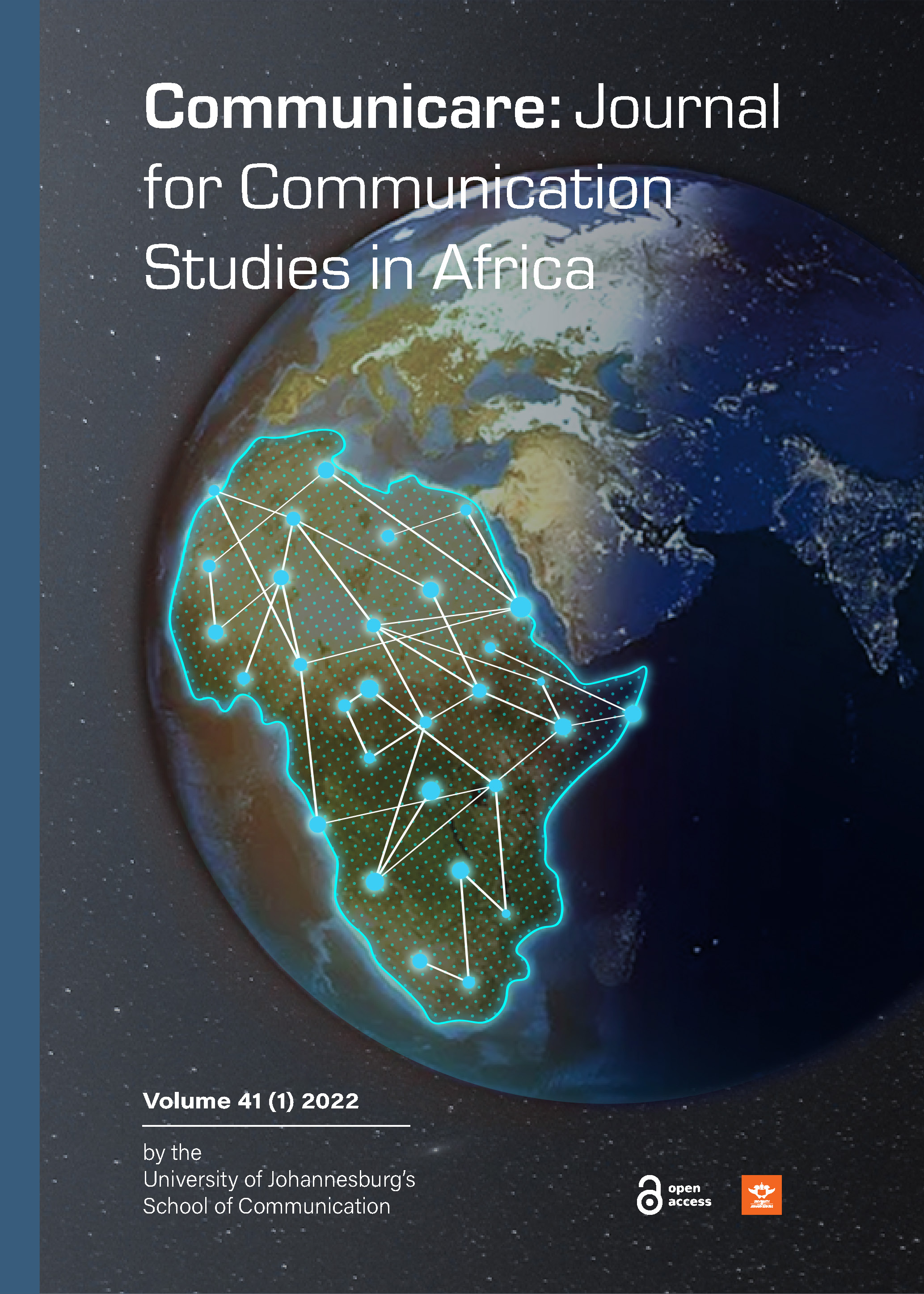Brand contact integration in the Ethiopian beer market: An internal IMC view of the market interface
An internal IMC view of the market interface
Copyright (c) 2022 George Angelopulo

This work is licensed under a Creative Commons Attribution-NonCommercial 4.0 International License.
- Articles
- Submited: August 5, 2022
-
Published: August 5, 2022
Abstract
This paper assesses Integrated Marketing Communication (IMC) and brand contact integration in three areas that have received insufficient research attention. The study was conducted in a region that has received little research coverage (Ethiopia), a low involvement product sector (brewing) and from the theoretical perspective of the Nordic School. Following a series of in-depth
interviews and an inductive content analysis, we find that the brewer’s messaging is similar to the international norm, differing only in emphasis and application. Publicity and personal promotion are emphasised, product quality receives great attention, the company concentrates on a narrowly defined service interface, and a strong market-back strategy is evident in its communications. The Nordic School model of brand contact integration offers a heuristic prism for the assessment of communication integration, and we conclude that IMC principles are firmly embedded in the marketing communication practice of the Ethiopian brewer, but with characteristics that are specific to its unique market conditions.
Article Metrics Graph
References
- Barbour, R.S. (2018). Quality of data collection. In Flick, U. (ed.) Qualitative data collection, 217-231. London. DOI: https://doi.org/10.4135/9781526416070.n14
- Burgmann, I. (2007). Integrated marketing communications: Implementation and application issues in consumer-focused companies. Doctoral thesis. Hull: Hull University Business School.
- Creswell, J.W. & Creswell, J.D. (2018). Research design: qualitative, quantitative, and mixed methods approach, 5th ed. Los Angeles.
- Creswell, J.W. & Poth, C.N. (2018). Qualitative inquiry and research design: Choosing among five approaches. Los Angeles.
- Delgado-Ballester, E., Navarro, A., & Sicilia, M. (2012). Revitalising brands through communication messages: The role of brand familiarity. European Journal of Marketing, 46(1/2): 31–51. DOI: https://doi.org/10.1108/03090561211189220
- Duncan, T.R. (2002). IMC: Using advertising and promotion to build brands. New York: McGraw-Hill.
- Duncan, T.R. & Moriarty, S.E. (1997). Driving brand value. New York: McGraw-Hill.
- Edvardsson, B., Tornvoll, B., & Gruber, T. (2011). Expanding understanding of service exchange and value co-creation: A social construction approach. Journal of the Academy of Marketing Science, (39):327-339. DOI: https://doi.org/10.1007/s11747-010-0200-y
- Finne, Å. & Grönroos, C. (2017). Communication-in-use: customer-integrated marketing communication. European Journal of Marketing, 51(3):445-463. DOI: https://doi.org/10.1108/EJM-08-2015-0553
- Flick, U. (2018a). Designing qualitative research, 2nd ed. London.
- Flick, U. (ed.). (2018b). Qualitative data collection. London.
- Flick, U. (2018c). Triangulation in data collection. In Flick, U. (ed.) Qualitative data collection, 527-545. London. DOI: https://doi.org/10.4135/9781526416070.n34
- Grönroos, C. (2020). Viewpoint: service marketing research priorities. Journal of Services Marketing, 34(3):291-298. DOI: https://doi.org/10.1108/JSM-08-2019-0306
- Grönroos, C. (2015). Service management and marketing: managing the service profit logic. Hershey PA: John Wiley & Sons.
- Grönroos, C., von Koskull, C., & Gummerus, J. (2015). The essence of the Nordic School. In Gummerus, J. & von Koskull, C. (eds.) Nordic School: Service marketing and management for the future, 29-32. Helsinki: Hanken School of Economics.
- Gummerus, J. & von Koskull, C. (eds.). (2015). The Nordic School – service marketing and management for the future. Helsinki: Hanken School of Economics.
- Heinonen, K., Strandvik, T., & Voima, P. (2013). Customer dominant value formation in service. European Business Review, 25(2):104-123. DOI: https://doi.org/10.1108/09555341311302639
- Keller, K.L. (2016). Unlocking the power of integrated marketing communications: How integrated is your IMC program? Journal of Advertising, 45(3):286-301. DOI: https://doi.org/10.1080/00913367.2016.1204967
- Kennedy, B.L. & Thornberg, R. (2018). Deduction, induction, and abduction. In Flick, U. (ed.) Qualitative data collection, 49-65. London. DOI: https://doi.org/10.4135/9781526416070.n4
- Kitchen, P.J. & Burgmann, I. (2015). Integrated marketing communication: Making it work at a strategic level. Journal of Business Strategy, 36(4):34-39. DOI: https://doi.org/10.1108/JBS-05-2014-0052
- Kitchen, P.J. & Schultz, D. (2009). IMC: New horizon/false dawn for a marketplace in turmoil. Journal of Marketing Communications, 15(2/3):197-204. DOI: https://doi.org/10.1080/13527260903003793
- Kliatchko, J. (2008). Revisiting the IMC construct. International Journal of Advertising, 27(1):133-160. DOI: https://doi.org/10.1080/02650487.2008.11073043
- Kliatchko, J. & Schultz, D.E. (2014). Twenty years of IMC: A study of CEO and CMO perspectives in the Asia-Pacific region. International Journal of Advertising, 33(2):373-390. DOI: https://doi.org/10.2501/IJA-33-2-373-390
- Maison, D. (2019). Qualitative marketing research: Understanding consumer behaviour. New York: Routledge. DOI: https://doi.org/10.4324/9780429467028
- Mutesi. (2019). The Evolution of Ethiopia’s beer industry. https://mutesi.net/business/the-evolution-of-ethiopias-beer-industry/2019/04/
- Percy, L. (2008). Strategic integrated marketing communications. Burlington: Elsevier. DOI: https://doi.org/10.4324/9780080878294
- Schultz, D.E. (2010). New, newer, newest: evolving stages of IMC. Journal of Integrated Marketing Communications, 14(1):14-22.
- Šerić, M. (2016). Content analysis of the empirical research on IMC from 2000 to 2015. Journal of Marketing Communications, 24(7):647-685. DOI: https://doi.org/10.1080/13527266.2016.1184708
- Shimp, T.A. (2007). Integrated marketing promotions in advertising and promotion, 7th ed. Mason OH: Thompson South-Western.
- Shimp, T.A. & Andrews, J.C. (2013). Advertising, promotion, and other aspects of integrated marketing communications, 9th ed. Mason OH: Cengage Learning, South-Western.
- Silverman, D. (2017). Doing qualitative research. London.
- Smith, J.A. (ed.). (2015). Qualitative psychology: A practical guide to research methods. London.
- Whitehouse, D. (2019). Vasari’s fundraising highlights potential of Ethiopia’s drinks market. Available from:
- https://www.theafricareport.com/14745/vasaris-fundraising-highlights-potential-of-ethiopias-drinks-market/
- Zabkar, V., Mumel, D., & Vanita, N. (2015). Is management involvement in integrated marketing communications reasonable? In Bušljeta Banks, I., De Pelsmacker, P., & Okazaki, S. (eds.) Advances in advertising research, 283-294. Wiesbaden: Springer Gabler. DOI: https://doi.org/10.1007/978-3-658-08132-4_20





